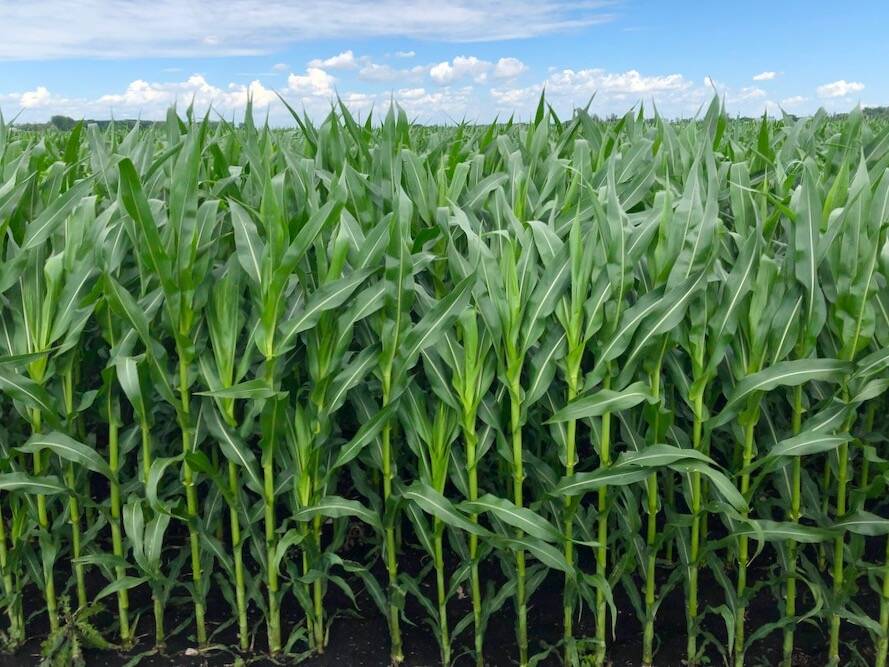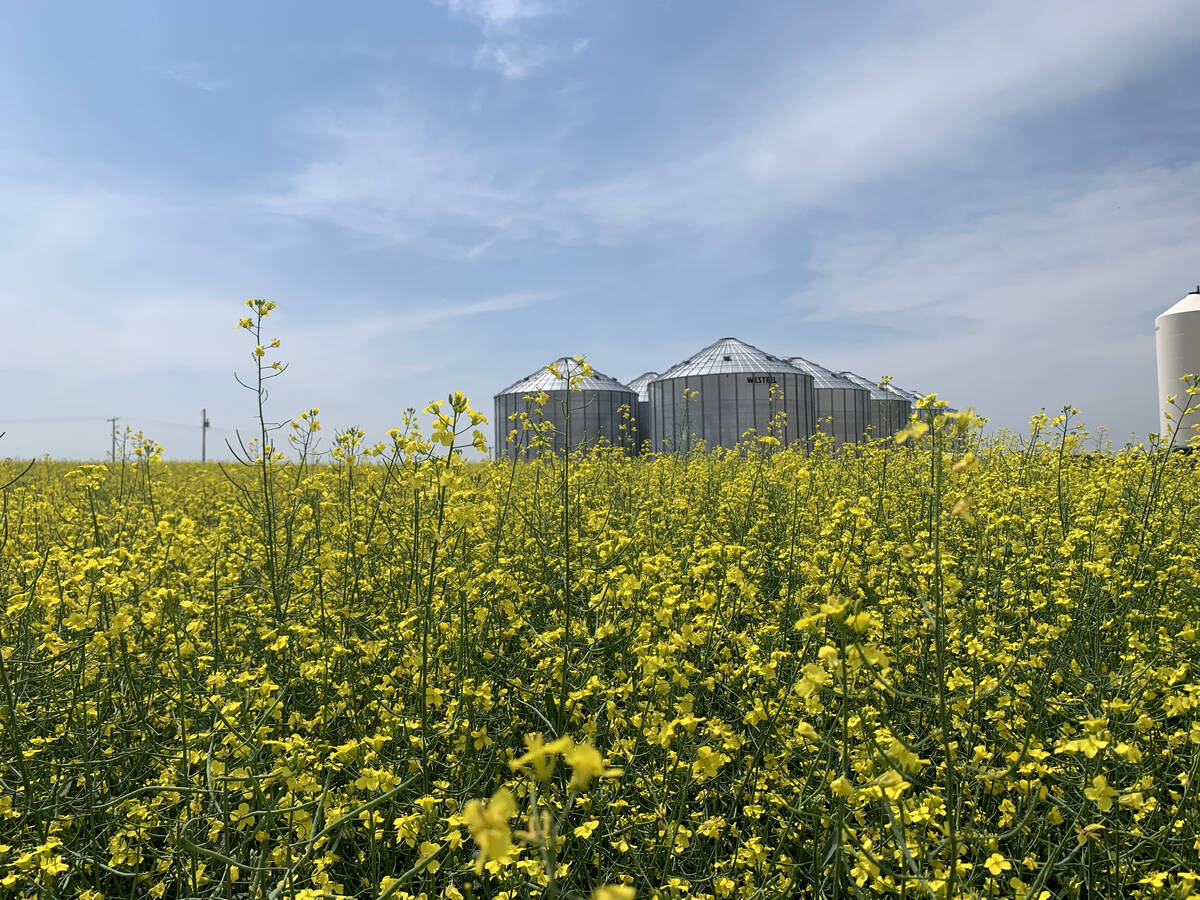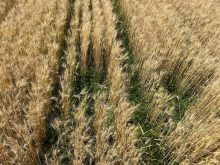It’s often said the most effective way to stay safe around grain is to keep out of it. But what exactly does that mean?
In part, it means being proactive by keeping grain in good condition. A key reason people become trapped in grain is because the stored product has gone out-of-condition; keeping grain in good condition lessens the need to enter a grain bin. That’s especially critical for canola, which is particularly susceptible to spoilage in storage.
Andre Harpe is vice-chair of the Canadian Canola Growers Association (CCGA) and a third-generation farmer with around 5,000 acres of canola, barley and grass seed northwest of Grande Prairie, Alta.
Read Also

Cancer agency reclassifies another herbicide ‘probably carcinogenic’
The WHO’s cancer research agency has now put atrazine, a herbicide well known to corn growers, in the same potential-hazard category where the agency put glyphosate.
“When it comes to grain, you have to be very careful around it, and the safest way to do that is to stay out of it,” Harpe says. “Many of the injuries I know of have been the result of canola sweating and creating a crust at the top. So, it’s very important that canola, and all grain, is stored correctly and safely.”
“Being proactive and on top of things is the best bet, because, unfortunately, it’s pretty simple for canola to spoil,” says Breanna Miller Friesen, an agronomy specialist with the Canola Council of Canada.
“The critical time to make sure grain is conditioned properly is in the initial post-harvest time. If canola goes into the bin with a higher moisture or if it’s quite warm, then we’re already increasing the chances of an issue later down the line.”
Since canola is sensitive to moisture, getting it down to eight per cent moisture and less than 15 C in temperature as soon as possible is key for safe long-term storage.
Of course, it’s not just the grain that farmers need to be mindful of in storage — dockage (grain dust, weed seeds, et cetera) and green canola can also have a significant impact as they tend to have more moisture than canola seeds.
“Ninety-nine per cent or more of seeds can be dried down and mature, but then there are those small pockets with high-moisture green seeds and that can cause spoilage,” Miller Friesen says.
Proper airflow is also essential for canola. As Miller Friesen explains, canola is a challenging crop for airflow because of its small size and round shape, which leaves fewer air pockets than other grains, and getting adequate air circulation can require more effort with larger storage facilities.
Once canola is in storage, it’s necessary to regularly monitor temperature and moisture levels. While monitoring is particularly crucial during the initial storage period to ensure the product is cooling down properly, Miller-Friesen stresses the importance of staying on top of monitoring year-round.
“Farmers can’t get complacent about monitoring their stored canola, particularly as the warmer weather comes in. Towards the end of winter, I know a lot of farmers are thinking about seeding and getting ready for the season ahead. But it’s important to still keep stored canola top of mind,” Miller Friesen says, noting cold snaps during the winter are an ideal time to run fans and move cool air around proactively.
“Considering how quickly a bin can spoil, a lot of farmers check their storage weekly or biweekly to stay ahead of things.”
On Harpe’s farm, monitoring stored grain is a regular occurrence, which he says makes it both easier and safer to detect issues early on.
“As soon as we see that something is happening to the canola, if it is starting to sweat or if it’s starting to get a bit warm, we pull it out of storage and move it or dry it,” he says.
In grain bins, heat rising in the centre and cooling off from the colder canola on the outside can lead to issues with moisture and spoilage. Crusted or heated seed at the top of a bin, typically in a cone shape, indicates that quick action is needed to prevent further spoilage.
“If out-of-condition canola is caught early enough, where some of it is just starting to spoil, it’s best to isolate and remove the spoiled canola as soon as possible and then get fans running and potentially move the remaining canola to another bin,” Miller Friesen says.
“The biggest thing is to catch out-of-condition canola before it impacts the entire bin. When a full bin is compromised, it is a very scary situation that hopefully few people ever have to experience.”
Proper practices pivotal
“My stance is that I want everyone to go home at night the same way they came to work, and the only way to do that is to try and keep things as safe as possible. Being proactive with good canola storage practices is a big part of that,” Harpe says. CCGA, Alberta Canola, SaskOilseeds and the Manitoba Canola Growers Association have been supporters of the Canadian Agricultural Safety Association’s BeGrainSafe program since it launched in 2017.
The return, he says, is far greater than just unspoiled canola.
“One of my employees likes working on my farm because of how we proactively address safety, and he has told me he feels safer on my farm. When you are proactive and work to keep things as safe as possible, it makes for a better working environment, which benefits the entire farm,” Harpe says.
Although some may have an “if it’s not broken, don’t fix it” approach to certain farming practices, Harpe says it’s important for farmers to stay up to date on new techniques and consider the return on investment for technologies that can boost efficiency — such as with monitoring stored grain — and improve safety.
“There is always room for improvement on any farm. At the end of the day, a safe farm is a successful farm.”















